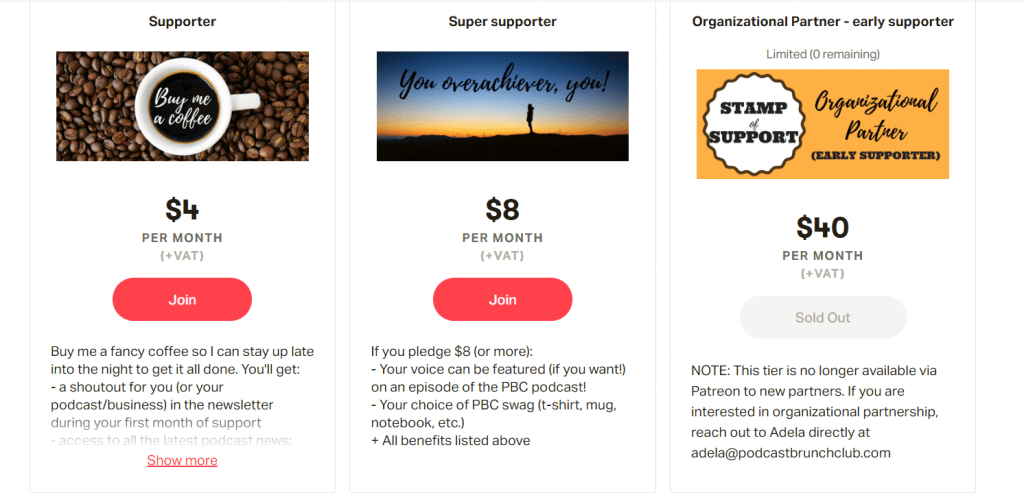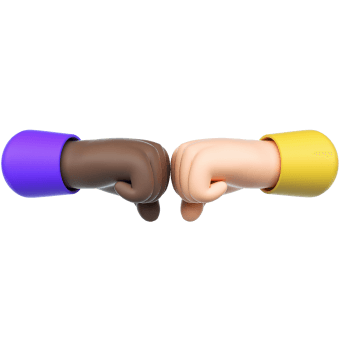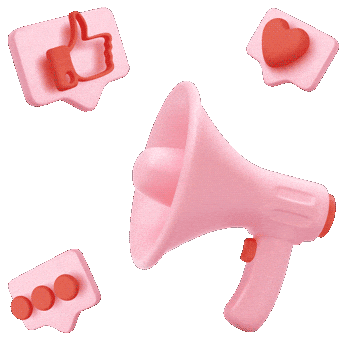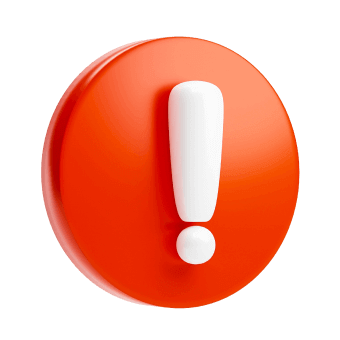Monetizing Podcasts: How Much Can You Earn?

Podcasts are an appealing yet unclear format. There are lots of ambiguities: it’s hard to evaluate the number of listeners and explain the benefits of this delivery method to those who are not into it. A podcast owner’s earnings are also barely calculable. But, on the other hand, this format can deliver profit.
In the previous part of the article we told you how to record, edit, distribute, and promote podcasts. Now let’s talk about money. And there are a bunch of ways to capitalize on podcasts.
Listener donations, crowdfunding
Donations are money listeners voluntarily contribute. The podcast owner can collect money in various ways: for instance, using Patreon, encouraging listeners to help the project during shows, or deploying PayPal transfer buttons on the podcast page.
And the most efficient way is the Patreon way. This website, Patreon, was intended to help all content makers, not only podcast hosts. You register on the service, publish your podcast and invite users to contribute to your project. It’s up to you how much money to request: donations may amount to $1 or $100 per month. People who donate to your project become your patrons.
Patreon recommends offering rewards for donations, depending on the amount of contribution. For instance, you can return a favor for a small donation in the form of access to exclusive materials that cannot be found in main episodes. For larger contributions, grant access to offline events or even express your gratitude during a show.

Podcast hosting built-in monetization tools
In the previous article, we told you about the podcast aggregator Anchor. Anchor founders assist podcast authors in finding sponsors and advertisers. To receive financing, the podcast owner has to record an ad and embed it into an episode.
Such sponsorship employs the CPM model: the podcast author pays for every 1,000 impressions (listens). For example, the advertiser offers the price of $20 per 1,000 listens. Your episode manages to reach 2,000 listeners, so gross income is $40. Your share will be $28, because Anchor charges a 30-percent fee. Nice as it may sound, be advised that reaching 2,000 listeners is big of a task.
What are the flip sides of this method? Some advertisers are too sharp in moderating ads. Besides, the program only works in the US and, as you may guess, for English-speaking podcasts only.
Castbox also has a podcast cash-in solution. Podcasters can earn under the paywall model, where they provide users with exclusive content for extra payment. However, only major podcasts such as Wondery are using this model so far.
Spotify offers a noteworthy monetization model. Listeners are shown the advertiser’s link right during the episode. Hosts don’t have to voice-over the ad copy. Only available in the US and Germany.
Embedded audio ads
To launch this ad, the podcaster needs to find brands and companies on their own. And only when the podcast gets noticed and popular, advertisers start approaching it.
There are some podcast labels concerned with in-podcast advertising. They provide content makers with advertisers for a percentage-based fee. If you feel your podcast is mature enough to cooperate with advertisers and labels, reach a company with a proposal. And don’t forget to attach some statistics.
Experts say a podcast can cash in when each episode gains 10,000 listens. But this number shouldn’t be your only goal and reference point: your audience may be smaller but more loyal.
The cost of advertising on podcasts hinges on a multitude of factors: brand and podcast popularity, ad duration, format (an inset or entire promotional episode).
Prices vary hugely, and so do formats. An ad can be a pre-roll, middle-roll, or post-roll—depending on the place in the show where the author reads the ad copy. Advertisers don’t like post-rolls: the users understand the show is over and nothing is going to happen but the ad, and close the podcast. Pre-rolls usually cost more.
You can record partner episodes that would be completely devoted to a product or service. But if you take on such a task, make sure the product you promote is interesting and consistent with your podcast’s format.
Example. You host a podcast about money and financial literacy. A partner episode is dedicated to investing money and sponsored by a bank that promotes its investment solution. The guest tells about their experience with the product, failures and achievements. Not only can this story be exciting and helpful, it can also be a potent promotion technique.
A drawback of in-podcast ads is that brands don’t always understand how this format works and how they can benefit from podcasts (especially if they don’t understand what a podcast is). What makes familiarization harder is that, as we have already mentioned, it’s hard to collect and present the numbers and figures: different services employ different metrics and data. There are no audio ad performance studies that could suggest at which time in a show it would be better to deploy an ad.
Actually, you can refer to sparse but real, existing data. For instance, one study reveals that 70% of users pay attention to audio ads. Statistics also show that 80% of users are ready to listen to the ad if they could access the podcast after it. Besides, services like Anchor offer listening statistics, and this is important. How much an advertiser is going to pay often depends on these very numbers; it can be a fixed rate per 1,000 listened, for example.
Another podcast’s specific that obstructs advertising is that podcasting is an evergreen format. Every episode will remain relevant for a long time; users can listen to it on the premiere day or in a year. With this in mind, it wouldn’t make sense to promote one-time or upcoming events. Imagine that you recorded an episode in may and advertised an exhibition that only lasts one month. A user who will listen to this episode in six months won’t appreciate that irrelevant ad.
But there are good sides. For starters, podcast listeners are usually target and loyal audiences. What people value most in a podcast is the host’s personality: they trust their opinion and are ready to buy a product they recommend. Make advertisers aware of this benefit.
Besides, podcast ads are cheaper than buying promotions from YouTube bloggers. Emphasize this advantage when offering to publish an audio ad in your show.
Earning with affiliate networks (CPA)
This podcast monetization method is rarely used. And it’s a loss! We see great potential in this way to cash in, so let’s dig into it. You know that only time can say whether a project will be successful, but this model is definitely worth considering.
Advantages of CPA over other types of podcast ads:
- You choose what to promote and how. In other words, you find an advertiser in the program catalog and create an ad in a format you see fit; you choose how and what to say.
- You can promote several brands in one podcast. Usually, advertisers cooperating with affiliate programs feel comfortable being in one ad section with rivals.
- You don’t put your money at stake. Advertisers don’t pay you in advance, so if nobody clicks the affiliate link after the show, you won’t lose anything.
- Low entry barrier. Even a novice podcaster can join an affiliate program and capitalize on it. For instance, Admitad’s All Programs catalog contains lots of programs that don’t require pre-moderation. Any publisher can quickly start handling them. To find no-moderation-required programs, you can use Extension Lite. Learn more about Admitad Extension here.
But here’s the catch. CPA is not about here-and-now earnings. It needs time, effort, and continuous tests of programs and formats. Don’t expect to become a millionaire in a month.
Using affiliate links in shows is easy. Just tell your listeners about the product during the episode and invite them to buy it by following the affiliate link you deploy in the episode description.
You can even include an affiliate link in the episode’s timestamps. Here, in the fourth item, you can see the affiliate link to Instant Pot:

How much podcast owners earn
Time to see what we know about podcasters’ earnings.
Famous American podcast host Joe Rogan earns up to $30,000 for one (!) episode, according to some estimates. Coming down to earth, we see that US podcasters charge $15-20 for a 15-30-second audio ad inserted into an episode.
Here are the estimates US experts prepared. For instance, you release one episode every week and furnish each of them with three audio ad sections. Two percent of your listeners are ready to donate to your project via Patreon, $5 per month each. One percent of your audience buy products you promote, following affiliate links you publish in the episode description. If each of your episodes gains 1,000 downloads, you will make $745 per month. If you hit a larger amount of downloads, you will get $4,925 per month.
There are even some successful cases among Russian-speaking podcasts. Blitz and Chips listeners donate to the host, Grigory Prorokov, around $500 every month on Patreon alone. Founder of Beardycast earns $1,200 to $1,400 from patrons monthly; and he also profits off of advertising (no exact numbers disclosed).
How to promote products in a podcast
Formats
Most likely, you will have to compose the audio ad copy yourself. Keep it creative. Don’t go with cliches like “This episode is sponsored by…”. Here are some good-to-use in-podcast ad formats.
- Interview with the creator of the promoted product. This would be appropriate if both the product and the developer are interesting enough to deserve an entire episode. Alternatively, this interview may be a small insertion into your show. But make sure the interview is consistent with the episode’s subject.
- Interview with a person who used the promoted product. For one, if you promote online games, invite a blogger who already played the game you’re advertising. Find the guests on brands’ social media profiles or recommendations websites like IRecommend.
- Create regular thematic insertions in every episode: you can fill them with organic and appropriate recommendations that won’t look like an ad (but they will be). Make a regular feature out of it: something like “Tip of the Day” or “Gadget of the Week” series (the latter would do if you host a technology podcast). In such insertions, you can tell your listeners about noteworthy products and/or services.
- Tell a story about your experience with the product. In one podcast, the host often mentioned that she underwent mental therapy. In another episode, she told about her case with one online psychotherapy service and shared a coupon code for the first-visit discount for her listeners. It looked—and sounded—very appropriate and sincere.
Models and tools to choose
- Discounts are evergreen purchase motivators. Tell your followers about the product and then invite them to follow the link and get a discount. Use coupons and promo codes that advertisers usually provide. Don’t forget to mention the codeword for a discount, in your show.
Keep in mind that coupons and promo codes are usually limited in time. Make sure you tell your listeners when the discount expires so you don’t frustrate them. - In affiliate networks, most advertisers are ready to provide exclusive terms to publishers. Don’t hesitate to reach them and tell about the benefits of in-podcast promotion. Present your podcast’s statistics and negotiate, say, a higher sale fee or request creative recommendations. If you convince the advertiser that podcasts ads can be efficient, they will be happy to help you with promotional routines.
- Create a landing page so your listeners can learn more about the product. This can also help avoid overloading the episodes with ads. Just mention the product briefly and invite listeners to go to the landing page for further details.
Remind the users that you have a website where they can learn about all products you promoted in your show. - Create an email newsletter where you can send podcast news, links to new episodes, extra materials, and links to promoted products and services.
What to promote
Here are the most profitable and demanded product and service category for in-podcast promotion:
- books
- electronics and gadgets
- children’s products
- movies/event tickets
- psychology (literature, visits)
- online education (courses)
Products and services of these categories can fit in thematic podcasts well. Surely, you may not want to advertise fridges if you host a psychology show.
Extra tips
- Half of the users are notified about the new episode in the app where they listen to podcasts (e.g. Apple Podcasts or Google Podcasts). But many users also stay tuned to the podcast’s social media pages. With this in mind, create a Facebook community or Instagram page for your show.
- There are two most common reasons why people don’t listen to podcasts: they don’t know that podcasts exist or don’t know where and how to listen to them. Educate the users! Write articles, communicate on forums and on blogs to tell people about podcasts (and promote yours!).
- A catchy podcast logo is great. But a unique, branded, picture of every episode is grand.
- A study shows that people are ready to listen to an ad no longer than 15-20 seconds straight. With that, the most optimal episode length is around 30 minutes. Make sure you distribute the ad time across the episode correctly.
- Be honest with your audience and let them know if there is an ad in the episode. Explain that when they follow ad links, they support your podcast and help it grow.
Be patient, create quality content, and be honest with your followers. If you stick to these rules, you will derive not just pleasure from hosting podcasts, but also profit.








